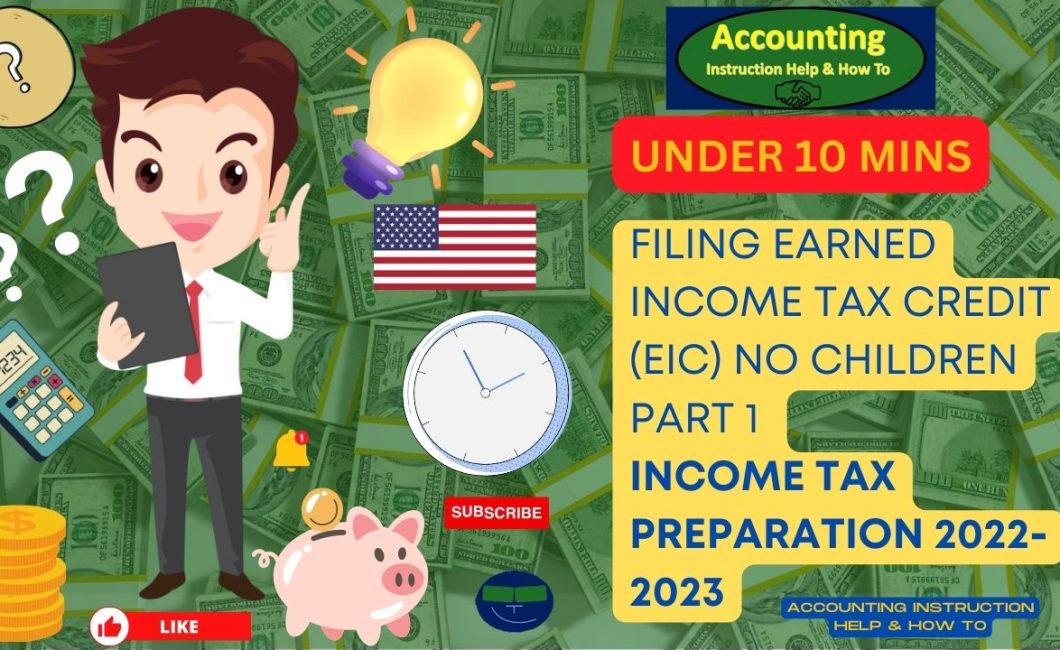Understanding the Earned Income Tax Credit (EITC) can be a daunting task. With so many variables involved, it’s easy to get lost in the weeds. However, it’s important to understand the EITC because it can be a significant benefit for low-to-moderate-income individuals and families.
Let’s take a closer look at the EITC and how it applies to taxpayers with no children. We’ll use the example of a single filer, Mr. Andersen, who lives in Beverly Hills and has a taxable income of $87,050 after taking the standard deduction of $12,009.
First, it’s worth noting that in order to be eligible for the EITC, you must have earned income. This can include wages, salaries, tips, and other types of earned income. Investment income, such as interest and dividends, does not count towards the EITC.
For taxpayers with no children, the maximum EITC amount for tax year 2022 is $560. However, this maximum credit is only available to taxpayers with an adjusted gross income (AGI) of $9,820 or less. As your income increases, the EITC gradually phases out until it reaches zero at an AGI of $16,980.
So, what is the maximum AGI that Mr. Andersen can have in order to receive the full $560 credit? The answer is $9,820. If his AGI is higher than that, the credit will gradually phase out until it reaches zero at an AGI of $16,980.
It’s also worth noting that the EITC is refundable, which means that if the credit exceeds the amount of taxes owed, the taxpayer will receive the difference as a refund. In our example, Mr. Andersen has already had $15,000 withheld from his paycheck for taxes, which exceeds the calculated tax liability of $14,774. This means that he would receive a refund of $226 if he were eligible for the full $560 EITC.
Keep in mind that this is just one scenario and that the EITC can vary depending on a number of factors, including the number of children you have, your filing status, and your income. It’s always a good idea to consult with a tax professional or use tax software to run different scenarios and determine your eligibility for the EITC.
In conclusion, the EITC can be a valuable benefit for low-to-moderate-income taxpayers. For those with no children, the maximum credit is $560, but it gradually phases out as income increases. Understanding the EITC and how it applies to your situation can help you maximize your tax refund and improve your financial well-being.
Understanding the earned income tax credit and how it impacts your taxes can be a complex and confusing process. However, by breaking down the components and understanding how the credit works, you can ensure that you are maximizing your tax benefits.
Firstly, let’s define what the earned income tax credit (EITC) is. It’s a refundable tax credit for low to moderate-income working individuals and couples, particularly those with children. The credit is calculated based on your income, the number of children you have, and your filing status. The maximum amount of credit you can receive for the 2022 tax year is $6,728.
Now let’s dive into an example to better understand how the EITC works. Let’s say you are a single filer, Mr. Andersen, living in Beverly Hills with a W-2 income of $100,000. With no children, you do not qualify for the EITC since your income exceeds the threshold for the credit. However, if you reduce your income to $16,480 or below, you will qualify for the maximum credit of $560.
Keep in mind that the credit is phased out as your income increases, so the higher your income, the less credit you will receive. In fact, for single filers with no children, the credit is completely phased out at an income level of $23,890.
Additionally, if you have non-taxable combat pay, you may choose to include it in the calculation of your EITC. This can be beneficial if it brings your income down to a level where you are eligible for the credit.
It’s also important to note that the EITC is a refundable credit, meaning that if the amount of the credit exceeds your tax liability, you will receive the difference as a refund.
In conclusion, understanding the earned income tax credit can be complicated, but it’s worth the effort to maximize your tax benefits. By carefully reviewing your income and filing status, you can determine if you are eligible for the credit and how much you can receive. And if you have any questions or concerns, it’s always best to consult with a tax professional.
As fascinating as your discussion of tax tables may be, it’s important to note that tax laws and regulations change frequently and can vary depending on individual circumstances. It’s always a good idea to consult with a qualified tax professional or accountant when making financial decisions that could impact your tax liability.
Additionally, while mapping out data in Excel or creating graphs can be helpful in visualizing information, it’s important to ensure that the data being used is accurate and up-to-date. With that said, understanding how taxes work and how they can impact your finances is an important part of financial literacy. It’s always a good idea to stay informed and educated on tax laws and regulations to ensure that you’re making informed financial decisions.

